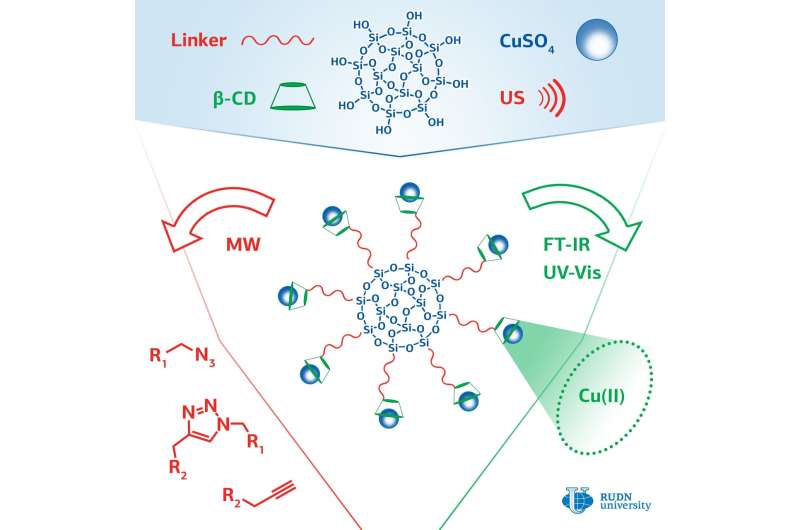Chemist creates new catalysts for click reactions

A chemist from RUDN University has created a series of catalysts for click chemistry. These reactions are widely used in the synthesis of biologically active substances, as well as in biological and medical research. New catalysts produce a yield of 99 percent. They are based on cyclodextrin and copper ions. The paper was published in the journal Molecules.
Click chemistry methods are used to synthesize libraries of substances with high chemical diversity, which is important when developing new drugs. These reactions are necessary for introduction of labels (for example, fluorescent ones) into biological macromolecules, proteins, and DNA molecules. This is used in biological and medical research.
The most commonly used click chemistry reaction is the addition of a substance that contains a carbon-carbon triple bond (alkine) to a compound containing a fragment with three nitrogen atoms in a row (azide). The classic version of the reaction involves the use of copper in oxidation state (I) as a catalyst. For this, ions of copper (II) and an excess of a reducing agent are introduced into the reaction, or copper (I) is used and the reaction is conducted with protection against oxygen, which imposes certain restrictions on the application of this reaction.
A chemist from RUDN University, Rafael Luque, and his colleagues have developed a series of catalysts with copper ions attached to the surface of silica gel particles using cyclic cyclodextrin oligosaccharide. Cyclodextrin consists of seven glucose molecules closed in a cycle. Inside the cycle there is a container that can hold the copper ion and increase its catalytic activity. Ultrasound irradiation was used to facilitate the binding of cyclodextrin to the surface of silica gel.
The effectiveness of the created catalysts was evaluated on a model reaction of phenylacetylene with benzylazide. The researchers managed to achieve a yield of the reaction product of more than 99 percent. The yield with copper (II) acetate was 14 percent, and in the case of copper (II) sulfate, the reaction did not occur at all. The method for producing the catalyst is simple, safe for the environment, and cheap; its use does not require to add reducing agents or oxygen-free conditions. The catalysts can find application in the pharmaceutical industry and in biomedical research. These materials can also be of interest in A3 couplings as well as other reactions including hydrogenations which are currently under investigation in the research groups.
More information: Katia Martina et al. Sonochemically-Promoted Preparation of Silica-Anchored Cyclodextrin Derivatives for Efficient Copper Catalysis, Molecules (2019). DOI: 10.3390/molecules24132490
Provided by RUDN University





















